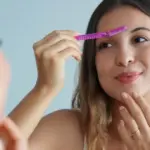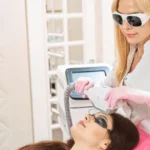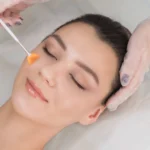Table of Contents
Dermal fillers have become a go-to treatment for people looking to enhance their facial features and reduce the appearance of wrinkles without surgery. They deliver immediate results and require minimal downtime, making them an easy choice for those seeking facial rejuvenation. But the journey doesn’t end after the initial appointment. To get the most out of dermal filler treatments, follow-up sessions are essential for assessment, adjustments, and ensuring the treatment’s success over time.
What Are Dermal Fillers?
Dermal fillers are injections used to smooth wrinkles, restore lost volume, and improve facial contours. Most fillers contain hyaluronic acid (HA), a substance naturally found in the skin that helps it retain moisture and plumpness. Over time, factors like aging and sun exposure reduce the skin’s natural HA and collagen, which leads to sagging and wrinkles. Dermal fillers provide a solution by restoring volume and smoothing out the skin in areas like the cheeks, lips, and nasolabial folds.
HA-based fillers work by binding with water to add volume under the skin while also promoting collagen production. These effects combine to give patients an instantly refreshed look with the added benefit of improved skin structure over time. The treatment is versatile and suitable for everything from subtle enhancements to more dramatic contouring, depending on the patient’s goals.
Why Follow-Up Sessions Matter?
Although dermal fillers provide visible results right after the treatment, their full effect takes time to settle in. The filler integrates with the skin’s tissue, and it adapts as the body metabolizes and interacts with the product. In the weeks following the injection, subtle changes can occur, making follow-up sessions necessary for evaluation and adjustment to achieve the desired outcome.
Making Adjustments After the Initial Treatment
Every person’s skin reacts differently to dermal fillers. Some factors, like the rate at which the body metabolizes the filler or how much facial movement occurs, can impact how the filler settles. This is especially true for areas with more movement, such as the lips or around the mouth. A follow-up session gives the practitioner an opportunity to assess whether the filler has settled evenly or if any areas need more product to create symmetry.
Many practitioners take a conservative approach during the first treatment to avoid overfilling. Follow-up appointments provide a chance to fine-tune results, ensuring they meet the patient’s expectations without looking overdone.
Addressing Complications Early
Side effects from dermal fillers are rare, but they do happen. Patients can experience swelling, bruising, or slight lumps at the injection site, which typically subside after a few days. However, in rare cases, more significant issues can develop, such as uneven texture, bumps, or an allergic reaction. Follow-up appointments allow for early detection and treatment of any adverse effects before they become noticeable.
If lumps or bumps occur, the practitioner can either massage the area to smooth out the filler or, if necessary, use hyaluronidase, an enzyme that dissolves HA-based fillers, to correct the problem. Addressing these complications quickly can prevent long-term dissatisfaction with the results.
Maximizing Results Over Time
Dermal fillers are not a permanent solution, as the body gradually breaks down the injected product. Most hyaluronic acid fillers last between six months to a year, depending on factors like the type of filler used and the patient’s individual metabolism. Follow-up sessions ensure that the treatment remains effective over time by maintaining the initial results through small adjustments.
During these appointments, the practitioner assesses how the filler is wearing off and makes recommendations for maintenance. In areas that experience frequent movement, like the lips, filler tends to break down more quickly. Follow-up care helps maintain consistent results and prevents noticeable changes between treatments. Additionally, combining dermal fillers with complementary treatments, like Botox, can enhance and prolong the filler’s effects.
Personalizing Treatment for Each Patient
The results of dermal fillers vary based on the unique characteristics of each patient’s face, including skin texture, facial structure, and muscle movement. Follow-up appointments allow for personalized adjustments that cater to each patient’s individual needs. These sessions ensure that the results align with the patient’s aesthetic goals, enhancing their natural features rather than changing them too dramatically.
Follow-up sessions also give patients a chance to provide feedback. If they feel that the results didn’t meet their expectations, adjustments can be made during the follow-up to achieve a better outcome. The practitioner can add more filler, dissolve a small amount, or suggest alternative treatments to help the patient reach their desired look. This ongoing communication between patient and provider ensures a successful, collaborative treatment process.
Monitoring the Healing Process
The healing process following dermal filler injections can vary widely from person to person. Most patients experience minimal side effects, but some may notice swelling, bruising, or tenderness at the injection site that lasts a few days. Follow-up sessions provide an opportunity for the practitioner to monitor how the body is responding to the treatment and ensure that the healing process is progressing normally.
During this time, patients are typically advised to avoid strenuous activity, alcohol consumption, and excessive sun exposure, all of which can exacerbate swelling or affect how the filler settles. The follow-up visit allows the practitioner to check in with the patient and provide any additional aftercare recommendations to promote smooth healing.
Common Questions About Follow-Up Care
1) When should the first follow-up appointment be scheduled?
A follow-up session is usually recommended about two weeks after the initial treatment, giving the filler time to settle into the skin while allowing any side effects, like swelling or bruising, to subside.
2) What happens if the patient isn’t satisfied with the results?
If the results don’t meet the patient’s expectations, the follow-up appointment offers a chance to discuss the concerns and make adjustments. Whether it’s adding more filler or dissolving a small amount, the goal is to ensure the patient is happy with the final outcome.
3) Do follow-up sessions add to the cost of treatment?
Many practices include follow-up appointments in the overall treatment plan, so patients aren’t hit with unexpected fees. These sessions are part of delivering comprehensive care that ensures the best results.
Conclusion
Dermal fillers are an effective, non-surgical way to rejuvenate the face, but achieving the desired results requires more than just the initial injection. Follow-up sessions allow our team to assess how the filler is settling, make adjustments, and ensure long-lasting results. Francienne Grantsaris also gives patients a chance to discuss any concerns and collaborate with their providers on achieving their aesthetic goals.
For patients looking for expert care and personalized treatment, FG Aesthetics & Medicine in Missoula, MT, offers a comprehensive approach to dermal filler treatments. Book your session for Dermal Fillers in Missoula, MT, now!








